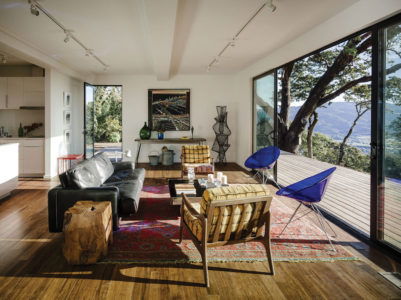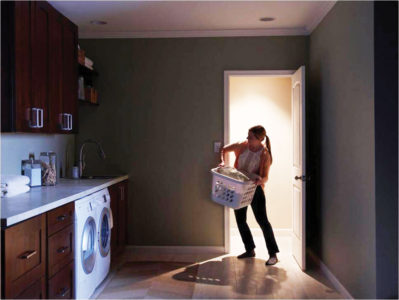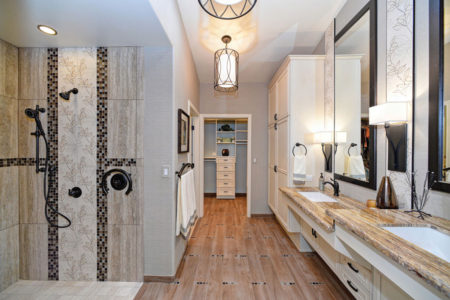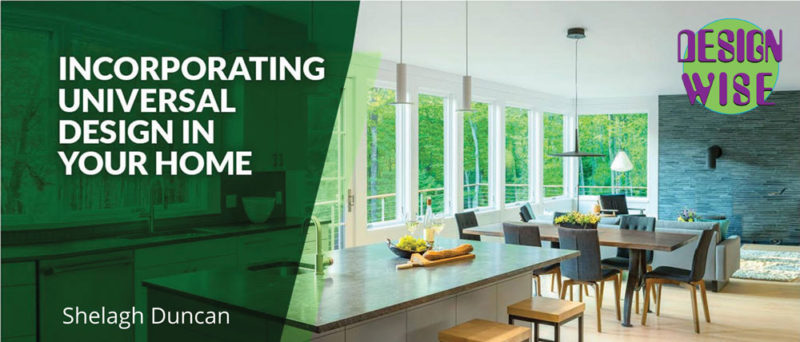Incorporating Universal Design in Your Home
Designing for Tomorrow
According to the US census projections, within 7 years all of the nation’s 74 million baby boomers will be 65 or older. The most senior among them will be on the cusp of 85. Many will be leaving the US to retire elsewhere.
You may already be aware about a recent ranking issued by International Living that places Costa Rica at the top of their global list of Best Places to Retire in 2021. That is some achievement for a small isthmus with a population of just about 5 million!
If you live here you will totally get this. Agreed, nowhere is perfect…but this part of Costa Rica can feel pretty close sometimes.
Many people are choosing to relocate in Costa Rica from younger age brackets too of course—working remotely has opened the world in one way, just as Covid has closed it in another.
In this article I want us to look at something retirees especially should be considering when they move and build a home here. You will probably have done some planning for the future financially, and now perhaps it’s time to be planning for your comfort and convenience as you age.
 None of us are getting any younger, even though living in Costa Rica will greatly benefit our health and wellbeing. Aging in Place is what we would all like to be able to do—to grow old gracefully and with dignity in the comfort of our own home. Designing your new home with that in mind will increase the enjoyment and the quality of your life for all the time you live there.
None of us are getting any younger, even though living in Costa Rica will greatly benefit our health and wellbeing. Aging in Place is what we would all like to be able to do—to grow old gracefully and with dignity in the comfort of our own home. Designing your new home with that in mind will increase the enjoyment and the quality of your life for all the time you live there.
You may have found the perfect lot in the perfect area, and want to build your ‘forever’ home to sit and watch sunsets over the ocean every evening. This all sounds ideal, until some years later perhaps you start to have mobility, or other issues and find that grand staircase you loved so much when you built it, becoming more challenging to deal with every day.
Designing a new home is the ideal time to consider the principles of design that relate to living in place—and it’s not just for retirees. It is universal design! This design concept is also relevant to those who have aging parents or younger children—or even rental properties. Making a beautiful, safe and thoughtfully designed home is really just as much about practical applications as it is about resale value.
Nowadays we are all familiar with the term Ergonomic Design, or ergonomics. This is an applied science concerned with designing and arranging things and spaces people use so that people and things interact at their most efficient and safe levels. This was originally proposed for our working spaces, but now can apply to many things we use every day.
Universal Design however, is more focused. It is “the design of products and environments to be usable by all people, to the greatest extent possible, without the need for adaptation or specialized design”. It was born out of the 20th Century social movements calling for barrier-free, accessible design. In the ’70’s these ideas were beginning to be incorporated into the general design of products as well as into public areas and living spaces.
 At that time Ronald Mace was a working architect in the US and was closely involved in North Carolina’s ground breaking Accessible-Building Code. Ron became a nationally and internationally recognized architect, product designer and educator whose design philosophy challenged current convention and provided a design foundation for a more usable world. He coined the term “Universal Design” to capture his philosophy of “design for all ages and abilities.”
At that time Ronald Mace was a working architect in the US and was closely involved in North Carolina’s ground breaking Accessible-Building Code. Ron became a nationally and internationally recognized architect, product designer and educator whose design philosophy challenged current convention and provided a design foundation for a more usable world. He coined the term “Universal Design” to capture his philosophy of “design for all ages and abilities.”
He had contracted polio as a boy and needed a wheelchair to get around, so understood firsthand the significant difficulties with accessibility at that time. During his life he formulated many other laws and changed the way we now think about accessible design.
The result is that when architects now think about and plan around peoples’ diverse needs and abilities (like kids, parents, seniors, people with injuries or illnesses, and people with disabilities) they can create environments that actually meet all those needs and abilities.
Some of the developments that came out of this concept and that we take for granted today include flat panel light switches, automatic doors, curb ramps for strollers, bikes, and wheelchairs, wider access doorways, lever door handles, and task lighting. Everywhere we go these features are now the ‘norm’—they add convenience to our lives and blend into the overall design.
Of course a home can always be retrofitted to make it more in line with Universal Design when needed—but if you are at the stage when you actually need more accessibility, it is a big upheaval to start renovating then!
 The designers at the South Pacific Design Center (SPDC)/Royal Palm Interiors are able to help you consider some of the features that can be incorporated into your home seamlessly and beautifully. Universal Design is just that—universal—and it’s simply good design.
The designers at the South Pacific Design Center (SPDC)/Royal Palm Interiors are able to help you consider some of the features that can be incorporated into your home seamlessly and beautifully. Universal Design is just that—universal—and it’s simply good design.
For example, most homeowners would naturally prefer that their master suites evoke resort spas, rather than rehab hospital rooms. Numerous design trends not only make possible, but make it stylish, as well. These include barrier-free showers, hand-held showerheads with adjustable heights, shower seats and benches, lever handle and hands-free faucets, and sleek cabinet pulls, (rather than knobs).
Our designers know these principles and can design interiors that work for you now, and for tomorrow.
Until next time…
Shelagh
Royal Palm Interiors – Uvita – 2743-8323
royalpalminteriors.com
Like us on facebook.com/RoyalPalmInteriors


